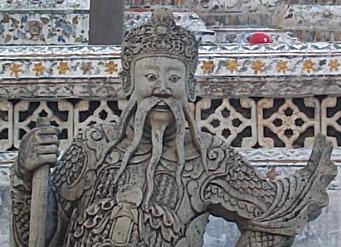|
Wai zandtao felt like putting what is in this epilogue as a chapter but it is not part of any storyline in Kolok’s Rise (part 3), it is background. Without reading Sciendtao’s Parchment and Sheldrake’s 10 some of the substance of part 3 could be lost, why does the fragment and then parchment matter? Does the story make sense without understanding what is in the parchment or wai's interpretation of what Sheldrake is trying to get at? He hopes so.
What these 2 extracts enquire about concerns the here and now on Earth. Sciendtao’s Parchment is simply a description of the egos in our lives leading to the power of the 1% and its patriarchy who are beginning to create extinction events. It is hoped that in some way through this story or otherwise we can see the dangers of ego, the way it divides and separates, and how we can live in harmony if we work on and release our ego. Sheldrake’s 10 is a snip from a discussion concerning Rupert Sheldrake taken from his TED talk and elsewhere. This TED talk is internet-promoted as a banned TED talk but wai wonders why it is not part of any science course to help consider genuine scepticism. How science is misused by patriarchy is part of the division that separates, if science could return to being a search for knowledge then science as that search could bring knowledge and understanding of ourselves that again could lead to harmony. Hopefully that comes out in the story.
Originally Amdor’s love was going to be part of this epilogue - written as a separate extract in the same way as Sciendtao’s parchment. However when wai started to write Ch 11 Amdor's Love became too wrapped up in the storyline of that chapter; love-wisdom and Ch 11 seemed inseparable. For zandtao the understanding of Love and its balance came from studying Nicola Amadora (here and Batgap) - she now has a new book "Love Unleashed". Studying Nicola helped give rise to zandtao's realisation that there can be bias in our wisdom traditions, and where that bias shows patriarchy can exploit leading to compromise and intellectual egos. Love-wisdom balance was wai's way round this bias, wai doesn’t know whether Nicola would accept what he writes or talks about. Developed from her meditation, Bringing in Love from Mother Earth is part of zandtao daily practice. Her meditation is addressed as a practice for women but wai encourages this love connection (from Mother Earth) to be part of practice of men.
Wai's scifi is always concerned with improving daily life, in part 3 rather than including these “extracts” as part of the narrative he separated them in this epilogue, but they are a central background to the story. So now you have finished the story why not read them as non-fiction – not scifi but daily life now?
|
